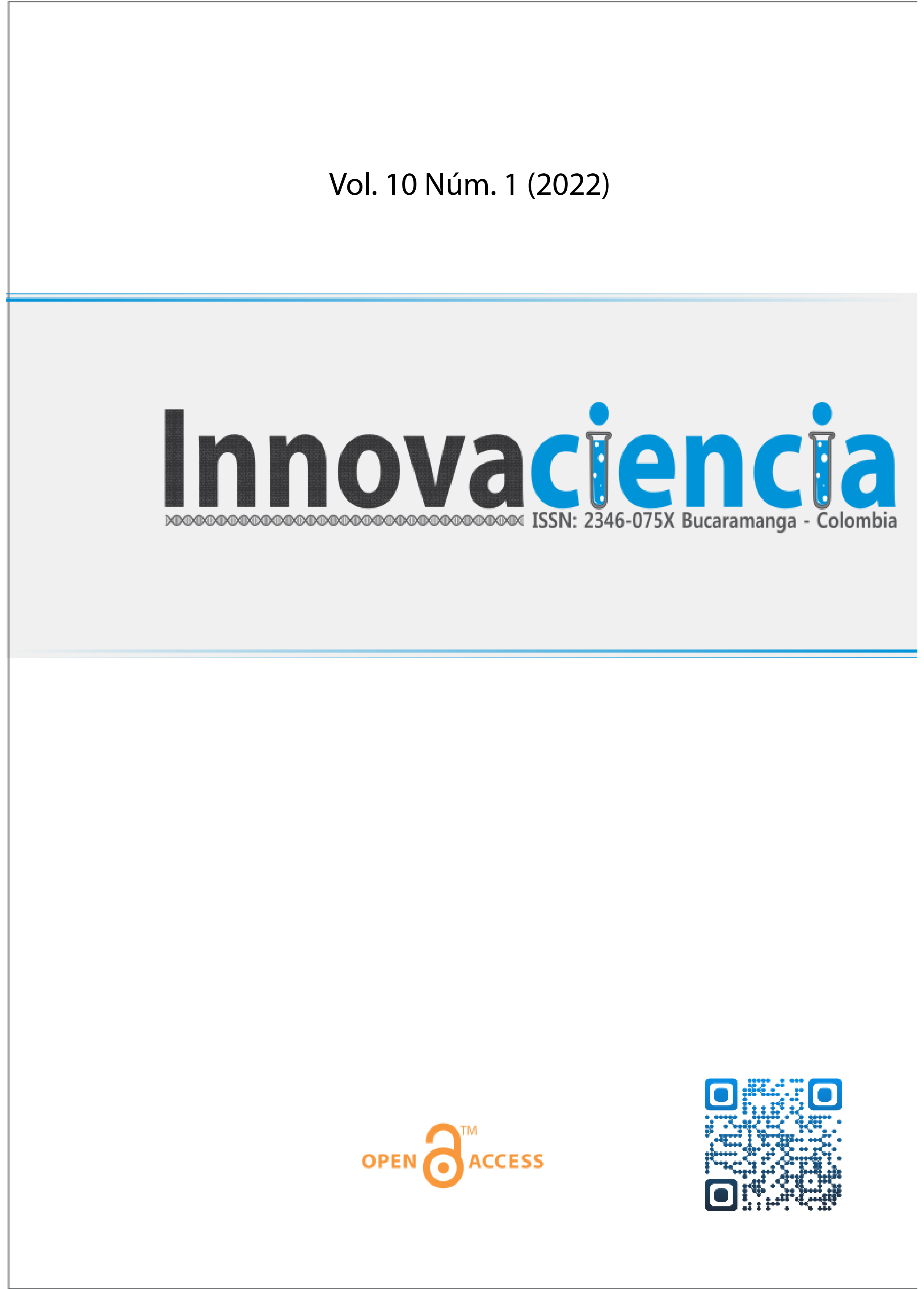Linguistic image of the Kazakh worldview in the national ornament
DOI:
https://doi.org/10.15649/2346075X.2957Palabras clave:
Ornamento, arte nacional, El Cuerno de RAM, Historia, CulturaResumen
Introducción: Hoy en día, un estudio exhaustivo de la artesanía kazaja es de gran importancia tanto para la ciencia como para la experiencia de vida. En el tercer milenio, la autoidentificación de los pueblos del mundo alcanzó un nuevo nivel de investigación. Los bienes nacionales no son sólo monumentos, sino que aparecen como objetos de investigación a través de diversos espectros de percepción científica. El propósito de nuestro artículo es estudiar la representación lingüística de la cosmovisión kazaja en el ornamento nacional. Materiales y Métodos: Junto con los métodos de acumulación y diferenciación, en el trabajo de investigación se utilizan los métodos de análisis histórico comparativo. Resultados y Discusión: En el artículo se considera el problema de reflejar la imagen lingüística del mundo en el ornamento nacional, que es un rico patrimonio de las personas, un símbolo de su cultura, un ejemplo de las obras de los maestros. Conclusiones: Se analizó la historia, clasificación y elementos del arte de la ornamentación, que fueron creados junto con el pueblo a lo largo de los siglos y se convirtieron en su bien material y espiritual.
Referencias
Argynbaev Kh. Kazakh halkynyn koloneri. Almaty: Oner; 1987.
Kincső V. Applied arts in the background of folk art Ethnographia. 2022. 133(2): 256-277.
Dudin SM. Carpet products in Central Asia. Collect of the Mus of Anthropol & Ethnogr of the Acad of Sci. 1928. Available at: https://www.academia.edu/40372986/Дудин_С.М._Ковровые_изделия_Средней_Азии_Сборник_Музея_антропологии_и_этнографии._Т._VII._Л._1928 Accessed: June 22, 2022.
Chepelev V. Art of Soviet Uzbekistan. Leningrad: Leningrad Publishing House. Regional Union of Soviet Artists; 1935.
Pallas P. Journey through various provinces of the Russian state. Tver: Tver State University; 2001.
Georgi I. Description of all the peoples living in the Russian state: their everyday rituals, customs, clothes, dwellings, exercises, fun, religions and other monuments. St. Petersburg: Tsarskaya Academy of Sciences; 1799.
Gaines AK. Collection of literary works. St. Petersburg: Nauka; 1987.
Stasov VV. Selected articles about Russian painting. Moscow: Children's Literature; 1968.
Potanin G.N. Essays on Northwestern Mongolia. 1882. Available at: http://az.lib.ru/p/potanin_g_n/text_1882_ocherki_mongolii_oldorfo.shtml Accessed: June 22, 2022.
Valikhanov ShCh. Selected works. Moscow: Nauka; 1986.
Margulan AKh, Akishev KA, Kadyrbaev MK, Orazbaev AM. Ancient culture of Central Kazakhstan. Alma-Ata: Nauka; 1966.
Argynbaev Kh. Historical and cultural relations of the Russian and Kazakh peoples. Astana: Altyn kītap; 2007.
Kasimanov S. Kazakhstan. National Encyclopedia. Almaty: Nauka; 2005.
Mukanov MM. Psychological study of the mind in the historical and ethnic aspect. Moscow: Institute of Psychology of the Academy of Sciences of the USSR; 1980.
Zhanibekov O. Echo… In the footsteps of the legend of the golden dombra: On the history and ethnography of the Kazakh people. Аlmaty: Oner; 1990.
Basenov TK. Ornament of Kazakhstan in architecture. Astana: Publishing House of the Academy of Sciences of the Kazakh SSR; 1957.
Jerlei T. My address is the Soviet Union – or is it? Baltic identity in souvenir production within the Soviet discourse. J of Mat Cult. 2022. 27(2): 147-165. https://doi.org/10.1177/13591835211052465
Tivadar P. The use of postcards as a means of communication. Ethnographia. 2021. 132(3): 513-534.
Popov YuG. G.N. Potanin’s Expedition in the Karkaraly district in the summer of 1913. Coll of the MAE. 2006. 2006: 160-166.
Margulan AKh. On the nature of the historical conditionality of the Kazakh epic. Izv KazFAN USSR. S Hist. 1946. 2: 75–81.
Margulan AKh. Kazakh folk applied art. Almaty: Oner; 1986.
Berecz A. A contest for priority: Nineteenth-century place-name etymologies of transylvania at large. Nation Pap. 2022. 50(2): 316-333. https://doi.org/10.1017/nps.2020.92
Abdualieva Sh. Khalyk Koloneri. Almaty: Rauan; 1992.
Alimzhanova ASh, Gabitov TKh. Oner – ozіn-оzі tanudyn kainar kozі. Almaty: Oner; 2011.
Omirbekova MSh. Kazakhtyn oyu-ornegi. Almaty: Almatykitap; 2003.
Descargas
Publicado
Cómo citar
Descargas
Número
Sección
Licencia
Todos los artículos publicados en esta revista científica están protegidos por los derechos de autor. Los autores retienen los derechos de autor y conceden a la revista el derecho de primera publicación con el trabajo simultáneamente licenciado bajo una Licencia Creative Commons Atribución-NoComercial 4.0 Internacional (CC BY-NC 4.0) que permite compartir el trabajo con reconocimiento de autoría y sin fines comerciales.
Los lectores pueden copiar y distribuir el material de este número de la revista para fines no comerciales en cualquier medio, siempre que se cite el trabajo original y se den crédito a los autores y a la revista.
Cualquier uso comercial del material de esta revista está estrictamente prohibido sin el permiso por escrito del titular de los derechos de autor.
Para obtener más información sobre los derechos de autor de la revista y las políticas de acceso abierto, por favor visite nuestro sitio web.
















